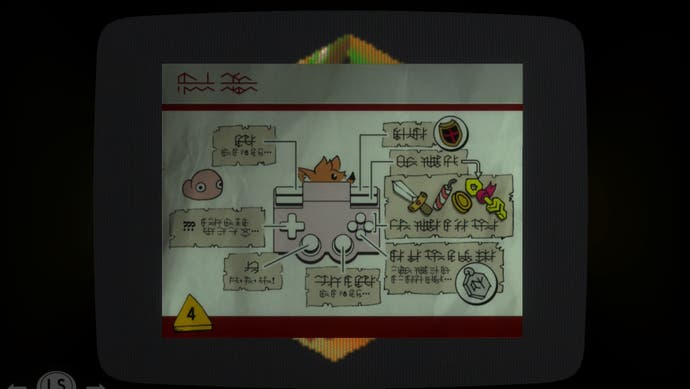Tunic hides instruction manual pages for the game you're playing in the game you're playing
Inception.
You'd be forgiven for missing Tunic's appearance during Microsoft's E3 2018 media briefing, sandwiched as it was between reveals for mega blockbusters such as Halo and Gears of War.
But this indie game, which one developer has spent over three years crafting, is certainly worth a closer look - and it's got one unique mechanic in particular I think is super cool.
At first glance, Tunic looks like Zelda viewed from an isometric perspective, except instead of playing as a young elf-like boy you play as a fox. There's more to the game than that, of course, but the influence of Nintendo's early Zelda games cannot be denied here. I mean, it's called Tunic, after all.
"You brought up Zelda," developer Andrew Shouldice said during a meeting at E3.
"You're probably not going to find a puzzle dungeon. You're not going to be like, okay I push the blocks. If it's similar to a game of that franchise, it would be most similar to Zelda 1, where you're just plopped into a world and you're like, apparently there are some dungeons here. Let's go find them."
Tunic, ultimately, is about a few things, Shouldice explained: exploring the countryside, fighting monsters and finding secrets.
There's a lot of exploration as you make your way through the world (and yes, you can move through and chop down tall grass). You find items, such as a sword and shield (and yes, you can smash pots). And, when it comes to combat, you can hold down the left trigger to do a perspective-shifting, circle-strafing of your target. With left trigger reserved for Tunic's equivalent of Z-targeting and right trigger reserved for raising your shield, the game has a neat "clench" feel to it. "If you're ever getting spooked you just sort of clench the controller and you'll turn and face the nearest foe," Shouldice said.
The combat looks a lot like Zelda's, too, although there's a Dark Souls-esque tinge to it. You can parry with your shield - if you time it just right - dodge enemy attacks using the invincibility frames granted by the combat roll, and, eventually, perform some pretty elaborate attacks using a shared magic meter. Tunic has checkpoints which recharge your meter, but also set a respawn point for when you die. Expect Tunic to offer a tricky, troublesome experience when it comes to combat. It doesn't sound ultra hard, but the idea is you should feel like you're intruding.
And, like The Legend of Zelda games, which splash Hylian all over their game worlds, Tunic has a mysterious language all of its own. It looks like this:
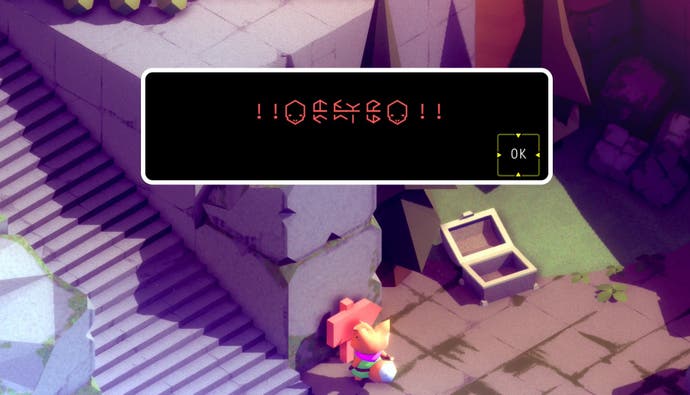
This mysterious language taps into the finding secrets element of Tunic. The mysteriousness of the Zelda universe has always excited me. The worlds are build upon secrets and revelations and an ancientness I find enormously compelling. Tunic taps into that.
One of the coolest ways this manifests itself in the game is via its instruction manual, the pages of which are actual secrets to find. This means Tunic hides instruction manual pages for the game you're playing in the game you're playing, which I absolutely love.
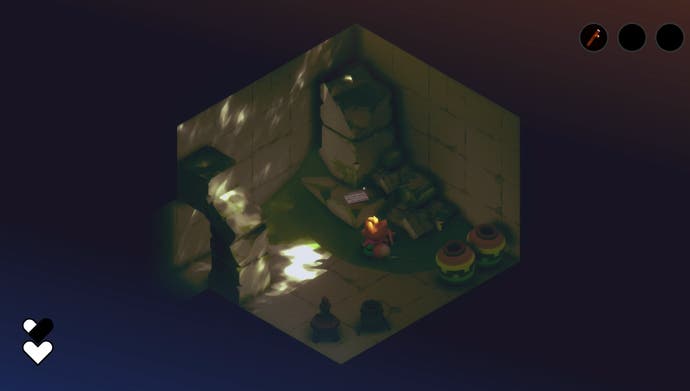
Here's the first one you find in Tunic:
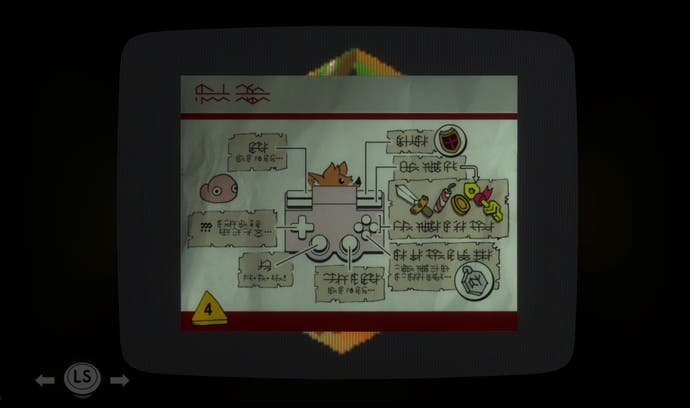
This image shows the controls for Tunic, hand drawn with its mysterious language.
"This one's pretty mundane - it's just the controls, a lot of which people have intuited so far," Shouldice said. "But if you look closely there might be some extra stuff there, and some more maybe profound secrets are going to be found in those manual pages."
And here's its back page, which shows item values with the same mysterious language.
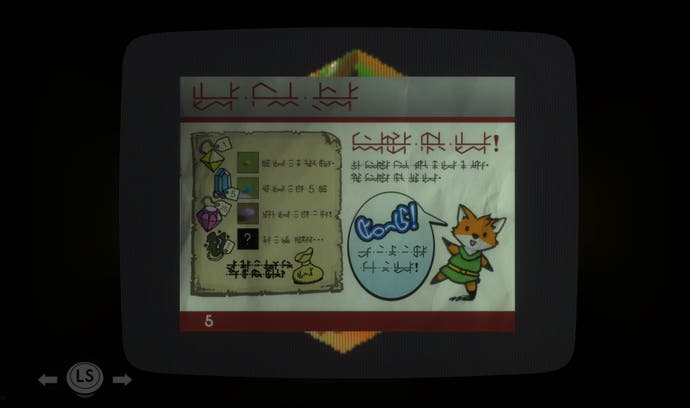
Shouldice told Eurogamer this feature was inspired by his time reading hard-to-understand instruction manuals as a kid.
"My next-door neighbour when I was a kid had a bunch of video games kicking around," he said.
"They were playing them and so I just had the manuals. I was leafing through them and seeing those weird squirly hand-drawn pictures in margins - that sort of stuff is exciting to me. What is this? What does this weird orb do that's in the manual that's got a bunch of weird text next to it? I don't know! That's exciting.
"That feeling of leafing through something and not fully understanding it, but knowing it's trying to tell something to you is super appealing to me.
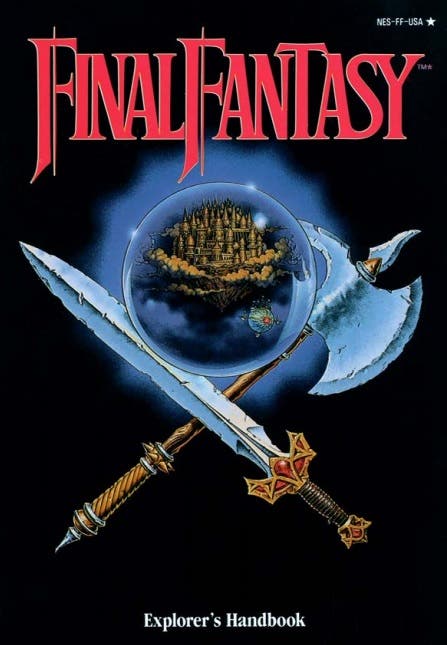
"Final Fantasy 1 shipped in North America with this big fat manual and it was like, here's how you play role-playing games. Step by step, let's go through and show you which equipment to buy, or whatever. Even though that was in English, it still felt like you were poring over a manuscript, interpreting these maps. That's super exciting to me.
"Just add to that that it's got this weird cryptic language. I hope people are going to have a good time looking at this thing and thinking, I don't even know where to start."
Shouldice's personal story rekindled memories of my own time spent trying to make sense of game manuals as a kid. I'll never forget the time my parents imported the Japanese version of Street Fighter 2 on the SNES for my birthday and I spent hours trying to make sense of the special move list (I couldn't for the life of me work out the input command for Zangief's spinning piledriver!).
I also remember a sense of wonder from reading game manuals. These mini lore books were in some cases as good as the games they were designed to explain. Wing Commander 3's manual, for example, was a treasure trove of background information - and its descriptions of the game's various spaceships entranced young teen me for hours. One lovely touch I noticed about Tunic is you can ever so slightly rotate the manual pages you find with the right stick, lending them a physicality in the virtual world. You get the feeling you might be able to reach out and turn the pages yourself, the way you used to be able to do as a child.
So, Tunic pushes my buttons. I love old-school Zelda, I love mysterious game worlds, and I love game manuals. One to watch!
